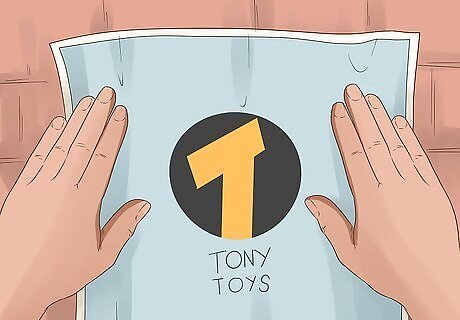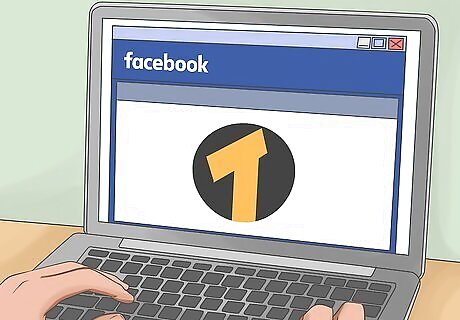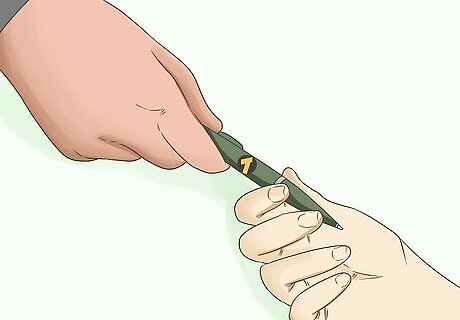
views

Create a brand image, or logo. Widespread brand recognition is your goal, as it will give your business credibility and inspire others to spread the word about your business. Grow your brand by placing your logo in your business stationery, business cards, email signatures, brochures, signs, website and merchandising materials.

Network. Meeting professionals from other, related businesses is an effective form of business promotion, as it provides you with opportunities to learn about your competitors, ask for referrals, form mutually beneficial partnerships in complementary industries and spread awareness about your business throughout a group of like-minded people. Network with other professionals in the following ways: Attend networking group meetings. You can find networking groups and clubs on the Internet, in newspapers and in trade publications. Introduce yourself to people at the meetings. Explain what it is your business does, what you offer that makes you stand out from your competition and what you are looking for in business relationships. Ask relevant questions during group discussions. In addition to promoting your business, you can learn a lot at networking meetings. Additionally, asking open-ended questions encourages others to participate in the conversation, and sets you up for more introductions. Hand out your business cards. Set up private meetings with those who express an interest in getting to know more about your business.

Advertise. Consider these methods for advertising your business: Signs. You may opt for storefront signs, billboards, marquee boards or street-side yard signs. Print. Place print ads in magazines, newspapers, coupon books, trade journals and industry magazines. Choose print mediums that are suited to your business. For example, if you run a technology parts recycling warehouse, then you may consider placing ads in computer classifieds and technology magazines. Commercials. Television and radio commercials are effective ways to promote your business to a broad audience, but they are relatively costly forms of advertising. Advertisements. You may opt to pass out promotional materials at trade shows, at store fronts, in parking lots or in any other highly-populated areas. Some businesses, like nightclubs and entertainment venues, hire street crews to hand out advertisements and attract new customers. Direct mail. You may purchase mailing lists targeted to your segment of the consumer market, then mail out letters, brochures, catalogs or postcards. This method is effective when you want to provide potential customers with paper coupons, vouchers, business cards or promotional merchandising. Public relations (PR) firms. You may hire a PR firm to create publicity for you in the form of news write-ups and press releases. AR Advertising. Short for Augmented Reality Advertising. It enriches the user experience by bringing life to the prints, when it's enhanced with extra layer called a digital layer.

Build business partnerships with other organizations. In effect, piggyback off the success of another business. Taco Bell has recently unveiled the Doritos Locos Taco, which is a branding coup for both Taco Bell and Doritos. Whenever you think of one brand, the other brand comes to mind, and vice versa. Business partnerships can be very effective advertising tools. Note: it's tough to build a business partnership with an established company when your company isn't yet established. Businesses understand the value (or lack of value) you're giving them, and may want something in return or simply avoid business with you in the first place.

Rely on the power of social networks. Social networks have become the new darling of advertising because much of the legwork is being done by dedicated fans, for free. You could pay someone to advertise for you, or you could establish a social community of fans who advertise by word of mouth, at little or no cost. What's it going to be? Try harnessing the power of viral media campaigns. Dollar Shave Club did very good business for itself simply by making a (funny, exciting, relatable) music video. It took off on social networks and now has over a million combined subscribers and followers on Facebook and Google+.

Offer freebies. Pass out merchandise with your company's name and/or logo on it so everyone you meet at networking events, trade shows, client meetings and even personal social gatherings. Things like pens, magnets and calendars are good merchandising ideas, as these tend to stay in use, and within view, for extensive periods of time.

Develop relationships with your customers. Customers are people — not numbers — and it is important that you put consideration and effort into building personal relationships with them. For example, when you send out Christmas cards each year, you not only gain customer loyalty but you also inspire customers to promote your business to the people they know.

Encourage customers to talk about their experience using your business. There is no tool more powerful than people talking with their family members or friends about your product or the quality of your work. If your customers are fully satisfied then you should ask them to refer you or your product to their family or friends. It is important to realise that your customers may not do so automatically and sometime a little poke requesting them to refer your business may work wonders. Go ahead, be bold and ask for more work.




















Comments
0 comment